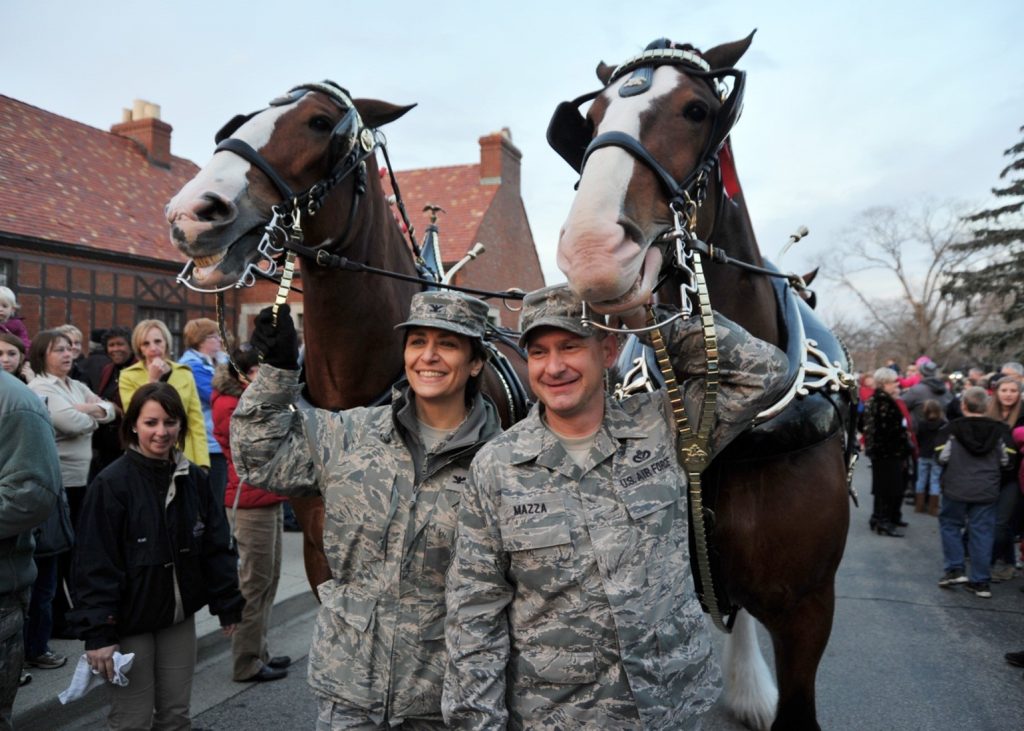Published: February 15, 2022

Air Force Veteran Continues to Serve the Community She Loves with the Support of Blue Star Families
Meet Cassie, a member of Blue Star Families’ Dayton Chapter and Advisory Board President. She’s an Air Force veteran who served over 20 years. Throughout her career, Cassie understood the importance of being confident—confident in having a seat at the table, and confident in mentoring and inviting other women to join her at that table.
But, like so many service members, Cassie felt the challenges of military life—as a female member of the Air Force, her career used to put a lot of demands on her family. And she’s not the only one. In fact, the 2020 Military Family Lifestyle Survey found that throughout the military life cycle, female service member respondents face greater challenges with balancing military and family life. The frequent moves, 13 in Cassie’s case, impacted the entire family. So, while Cassie loved her time in the military and the ambitious work culture, it’s no wonder why she wanted to create stability for both her husband’s career and their daughter’s education.
“All military members come to a point in their career when they have to decide to continue to serve in the military, or to make a transition to civilian life,” Cassie said. “My choice was motivated by my desire to avoid another school change for my daughter right before her graduation. She had already moved to 10 different schools during [my] career, and it was time for her to get settled in one location. She had a fantastic senior year, the year after I retired, and was able to attend college close to our new home.”
On average, military families move three times more often than civilian counterparts, with most moves taking place every two to three years.
“For female service members, the top issues reported were the amount of time away from family and military family stability,” said Geri Maples, Blue Star Families’ Dayton Chapter Director. “The decision to transition out of the military is often motivated by the desire to create a steadier life for family members. To be present for life’s milestone moments, to give them their big days as they pictured them to be. As wonderful as it can be to create that stability for your family, the transition out of the military can also feel overwhelming and scary.”
For Cassie, the process was challenging. She shared: “My transition to the civilian world was definitely a culture shock. Life outside the fence line was just so different. In many ways, I am still transitioning. I miss the days of everyone being in full support of each other no matter what because we are brothers and sisters in arms.” But Cassie found her strength and purpose through her experience. “My transition definitely led to a desire to continue to serve the community I love in any way that I could. My organization led the standup of myVeteran Community. The sole purpose is to improve local services for veterans. I regularly assist new veterans find work across our region and state to try to make it easy for them. Transition[ing] is difficult for just about everyone, so I do my best to make it easier by working with colleagues across the community who have the same desires to help vets.”
Cassie’s work is so important, considering roughly 200,000 service members transition to the civilian world each year. Cassie arms herself with data from the annual Military Family Lifestyle Survey (MFLS) to direct her work in support of veterans and to educate community leaders on the needs of veterans and we want to be there to support you too! We’re gearing up to release the results from the 2021 MFLS. Register to attend the release event virtually so you can be the first to get the latest information about today’s military families!
Posted In: Women in the Military
